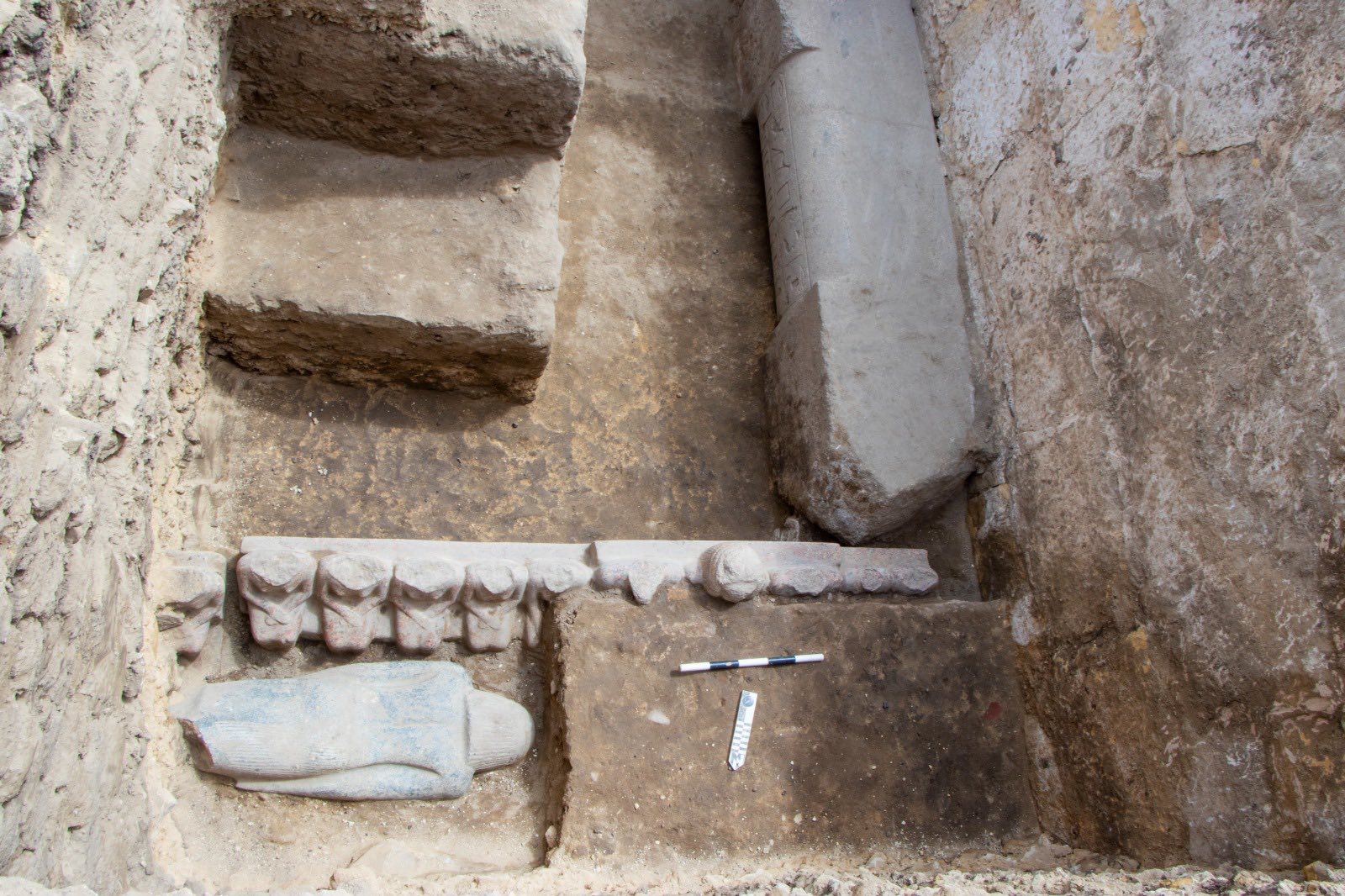

A team of Egyptian archaeologists has uncovered the tomb of Prince Waserif Ra, son of Pharaoh Userkaf, one of the first rulers of Egypt’s Fifth Dynasty. The tomb dates back 4,400 years.
The discovery was made during an excavation in the Saqqara necropolis, a major archaeological site south of Cairo known for its royal burials and ancient monuments.
The mission, led by the Supreme Council of Antiquities in partnership with the Zahi Hawass Foundation for Archaeology and Heritage, uncovered the tomb and several significant artifacts dating back to the Old Kingdom and later periods.

Among the most striking discoveries is a massive false door carved from pink granite. According to Dr. Mohamed Ismail Khaled, Secretary General of the Supreme Council of Antiquities, this is the first time a false door of this size and material has been found in the region.
The door measures 4.5 meters in height and 1.15 meters in width. It features hieroglyphic inscriptions identifying the prince and his many titles, including crown prince, regional governor, royal scribe, minister, judge, and priest.
Archaeologists also uncovered a statue of Pharaoh Zoser, his wife, and their ten daughters. Archaeologist and former Minister of Antiquities Dr. Zahi Hawass said the statue is a first-of-its-kind find.

Preliminary studies suggest the statues stood in a chamber near Zoser’s Step Pyramid and were later moved to Prince Waserif Ra’s tomb. The reason behind the relocation remains unclear, and the team continues investigating.
The excavation also revealed a red granite offering table measuring 92.5 centimeters in diameter, inscribed with a list of sacrificial items. Nearby, a large black granite statue of a standing man was found inside one of the tomb’s chambers.

The statue, standing 1.17 meters tall, bears the individual’s name and titles on its chest. Researchers believe it dates back to the 26th Dynasty, suggesting that the tomb may have been reused later.

Archaeologists discovered a second entrance flanked by two pink granite columns on the eastern side of the tomb. These were engraved with the tomb owner’s titles and a cartouche of King Neferefre.
To the north of the lintel, a rare grouping of 13 pink granite statues was found. Each figure is seated on a high-backed bench, marking the first such discovery in Saqqara.
Higher up in the structure, several statue heads were identified as likely depictions of the prince’s wives. One central statue remains intact, while two nearby figures are missing their heads. In front of them, a black granite statue was found upside down, measuring approximately 1.35 meters in height.
Sharif Fathi, Egypt’s Minister of Tourism and Antiquities, hailed the discovery of the tomb of Pharaoh Userkaf’s son as a significant moment in Egyptian archaeology. The excavation is ongoing as archaeologists uncover more elements of the tomb, which is now considered one of the most unique burial sites in the Saqqara necropolis.
